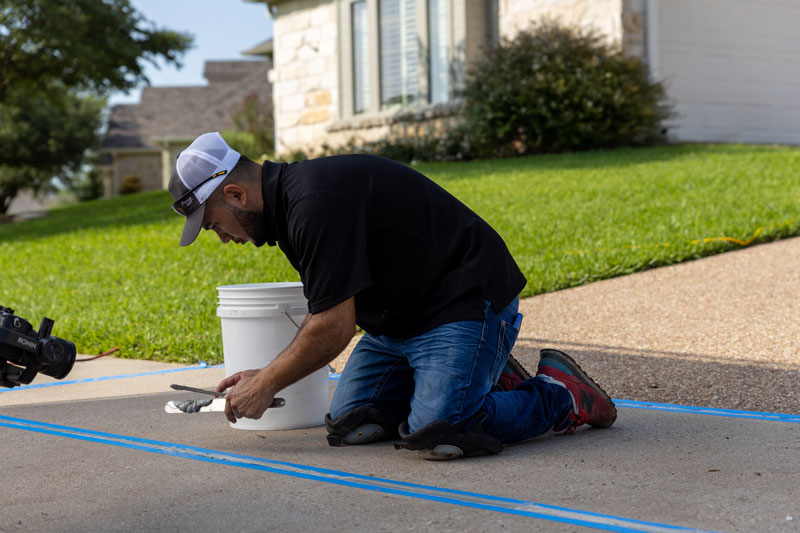Concrete lifting, also known as slabjacking or mudjacking, is a process that addresses the common issue of sunken or uneven concrete surfaces. Whether it’s a sidewalk, driveway, patio, or basement floor, uneven concrete can pose serious risks and detract from the aesthetic appeal of a property. This guide will provide a comprehensive overview of concrete lifting, including its benefits, methods, and considerations.
What is Concrete Lifting?
Concrete lifting involves raising and stabilizing sunken concrete slabs back to their original level. This process can be applied to various types of concrete surfaces, including driveways, sidewalks, patios, garage floors, and more. The goal is to restore functionality and safety without the need for complete replacement.
Causes of Concrete Settlement
Before delving into the methods of concrete lifting, it’s important to understand why concrete settles in the first place. Common causes include:
- Soil Erosion: Water infiltration can erode the soil beneath concrete slabs, leading to voids and subsequent sinking.
- Poor Compaction: Inadequately compacted soil during construction can eventually settle, causing the concrete above to sink.
- Freeze-Thaw Cycles: Repeated freezing and thawing can expand and contract the soil, creating gaps and uneven surfaces.
- Heavy Loads: Excessive weight on concrete surfaces, such as from vehicles or heavy equipment, can contribute to settlement over time.
Benefits of Concrete Lifting
Concrete lifting offers several advantages over complete replacement:
- Cost-Effective: Lifting existing concrete is generally more affordable than tearing out and pouring new concrete.
- Quick and Convenient: The process is faster and less disruptive, often completed in a matter of hours.
- Environmentally Friendly: Reusing existing concrete reduces waste and the need for new materials.
- Aesthetic Preservation: Lifting restores the original look of the concrete surface without the need for patchy repairs.
Methods of Concrete Lifting
There are two primary methods for lifting concrete: mudjacking and polyurethane foam injection
Mudjacking
Mudjacking, also known as slabjacking or pressure grouting, is a traditional method that involves pumping a slurry mixture beneath the sunken concrete. Here’s how it works:
- Drill Holes: Small holes are drilled into the affected concrete slab.
- Pump Slurry: A mixture of cement, sand, and water (the slurry) is pumped through the holes to fill the voids beneath the slab.
- Lift and Level: As the slurry is pumped, it lifts the concrete back to its original position.
- Patch Holes: The drilled holes are patched and sealed.
Polyurethane Foam Injection
Polyurethane foam injection is a modern alternative that uses high-density foam to lift and stabilize concrete. The process involves:
- Drill Holes: Small holes are drilled into the concrete slab.
- Inject Foam: Polyurethane foam is injected through the holes. The foam expands, filling voids and lifting the slab.
- Cure and Stabilize: The foam cures quickly, providing long-lasting support.
- Patch Holes: The injection holes are patched and sealed.
The benefits of polyurethane foam injection are numerous, including its ability to restore sunken surfaces quickly and efficiently. It offers a less invasive option compared to traditional methods, with minimal disruption to the surrounding area. Additionally, it provides long-lasting results, ensuring that surfaces remain stable and level for years to come.
Considerations for Concrete Lifting
While concrete lifting is an effective solution, there are several factors to consider:
- Extent of Damage: Severe damage or large cracks may require additional repairs or replacement.
- Underlying Issues: Addressing the root cause of settlement, such as drainage problems, is crucial to prevent future sinking.
- Professional Expertise: Hiring experienced professionals ensures the job is done correctly and safely.
- Material Choice: Polyurethane foam is more expensive but offers quicker curing times and better water resistance compared to mudjacking slurry.
Conclusion
Concrete lifting is a practical, cost-effective solution for restoring sunken or uneven concrete surfaces. By understanding the causes of concrete settlement, the benefits of lifting, and the available methods, property owners can make informed decisions to maintain safe and aesthetically pleasing environments. Whether opting for traditional mudjacking or modern polyurethane foam injection, professional expertise is key to achieving long-lasting results.

